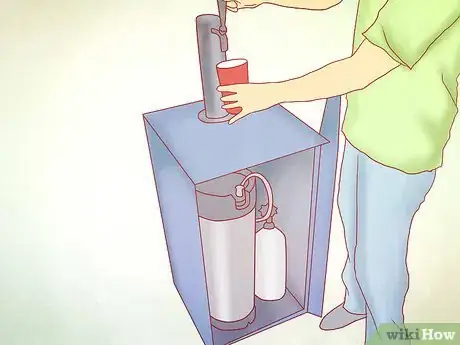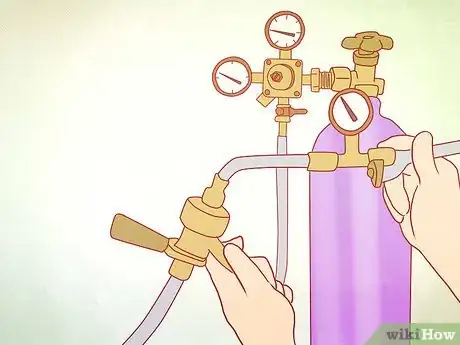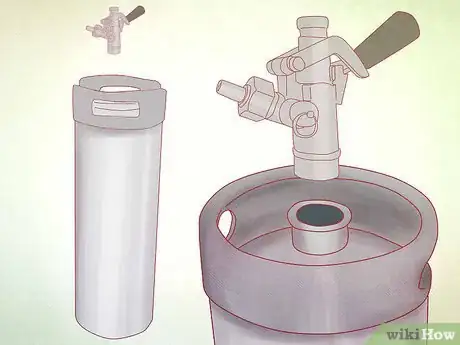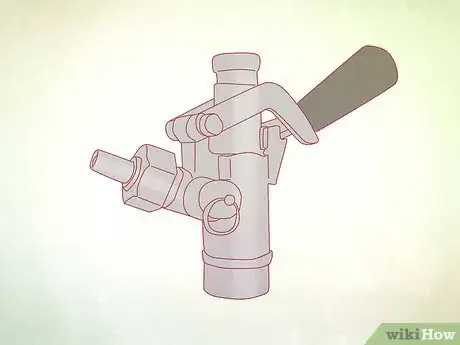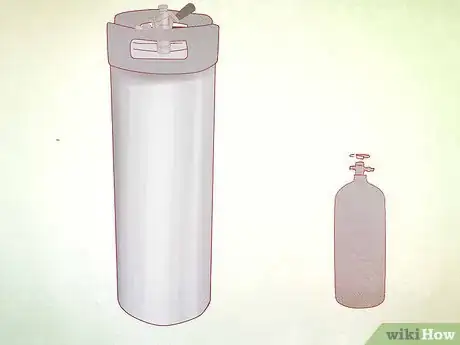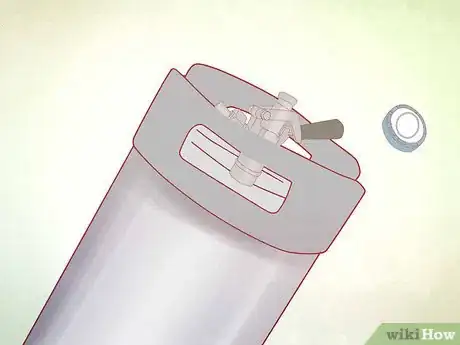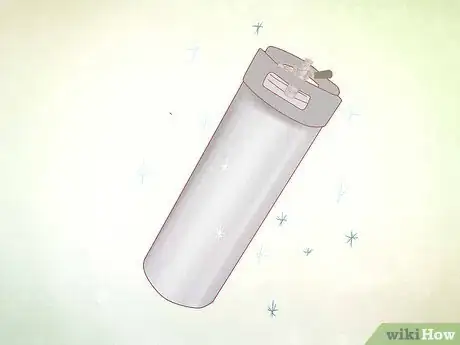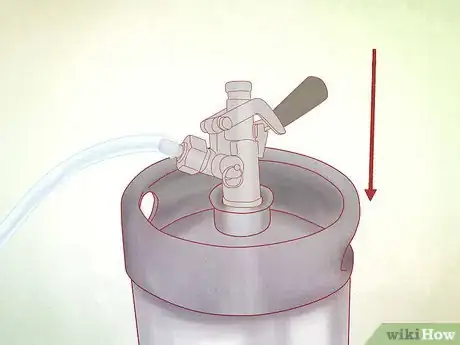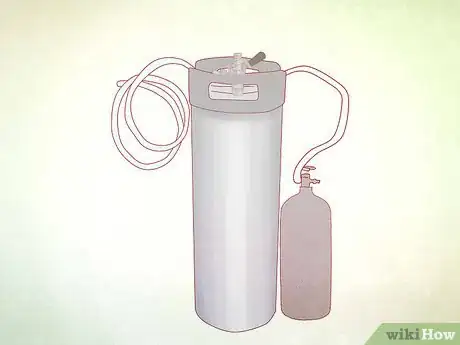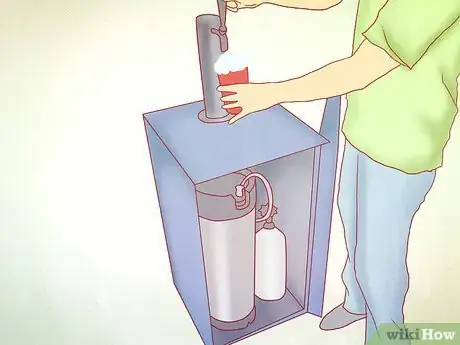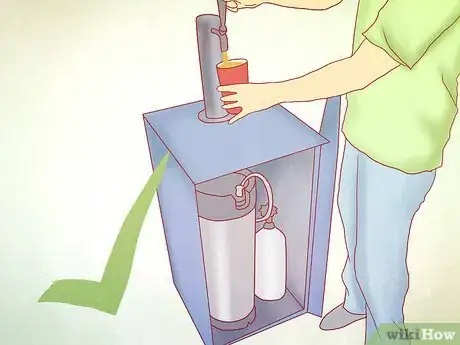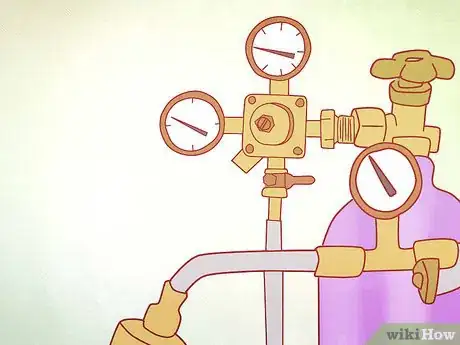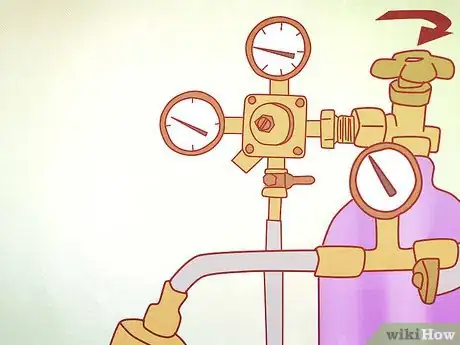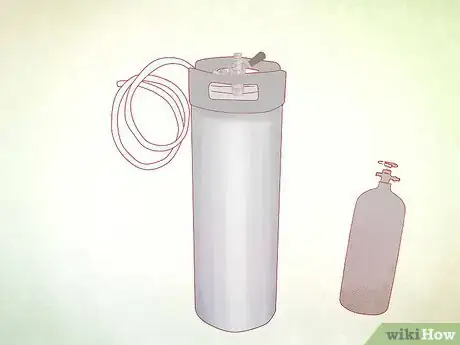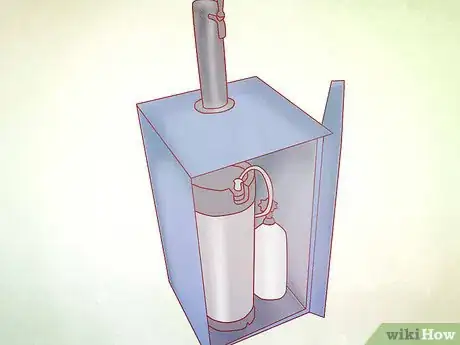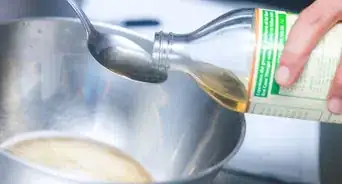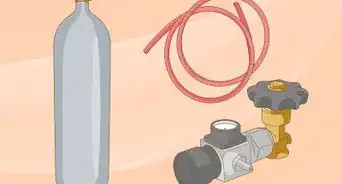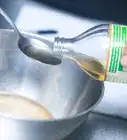This article was co-authored by Bryan Sullivan. Bryan Sullivan is a Bartender and the Owner of Bryan Sullivan Bartending in Seattle, Washington. With over 10 years of experience, he specializes in craft cocktails and has a thorough knowledge of beer, wine, and champagne. He currently holds a MAST Class 12 Mixologist Permit and has provided bar service for 100s of events. Additionally, his business has a 5-star rating and is a listed vendor on The Knot.
This article has been viewed 147,954 times.
Changing a keg of beer is a simple procedure but must be done systematically to reduce waste and ensure peak freshness and flavor. If you want to learn how to change a keg, follow these guidelines.
Steps
Remove the Empty Keg
-
1Check to make sure your keg is empty. You'll know that your keg is empty if you open the faucet of the tap and either very frothy beer comes out or none does.
-
2Look to see if your keg has a CO2 line. Some kegs will have a CO2 tank that provides pressure inside the keg to help dispense beer. The gas also helps the beer hold its natural carbonation. If the system you're using has a CO2 line, turn it off.Advertisement
-
3Lift the coupler handle at the base of the tap where it joins the keg. Grasp the coupler and rotate it counter-clockwise until it won't move anymore, usually just a half-turn.[1]
-
4Pull the coupler off the empty keg.[2]
-
5Move the empty keg aside.
- You can use Powdered Brewery Wash or PBW to clean kegs at home.
- Mix hot water and PBW in the keg.
- Scrub with a sponge if needed, or let it sit overnight and rinse the next day.
Connect the New Keg
-
1Put the fresh keg in a refrigeration unit or in a tub of ice.
-
2Remove the plastic cap from the top of the keg. The cap will show the brand of the beer and its freshness date.
-
3Ensure that the well of the keg is clean.
-
4Line up the lugs on the base of the tap with the slots in the well of the keg.[3]
-
5Keep the coupler handle raised and fit the tap firmly onto the keg. Twist the tap a half-turn, in a clockwise direction, until it is snug.[4]
-
6Press the coupler handle down to its locked position.[5]
-
7Turn the CO2 canister back on.
-
8Open the faucet fully to expel excess foam that is often built up in freshly tapped kegs.
-
9Make sure the beer flows through the faucet and there are no obvious leaks. If the beer doesn't flow, repeat the process.
Replace the CO2 Canister
-
1Check the gauge of the CO2 canister to make sure the cylinder is empty. The gauge should read 0. Other signs that you may need to replace your CO2 canister are that no beer flows from the faucet, or the beer is flat.
-
2Shut off the valve at the top of the canister by turning it clockwise until it won't go any further.
-
3Use a spanner, or specialized wrench, to slowly disconnect the reducing valve from the cylinder to let the remaining gas escape. This will reduce the pressure inside the valve.
-
4Set aside the empty canister.
-
5Install the new CO2 canister.
- Remove the protective tape from the replacement canister's outlet valve.
- Connect the new cylinder, tightening it with the spanner. Be sure to install a new plastic washer each time you change your gas canister.
- Turn the valve back on, twisting it counter-clockwise. Turn it until the hissing from the canister stops and the knob won't turn any further.
- Make sure the gauge shows pressurization.
Community Q&A
-
QuestionWhen I remove the coupler from the empty keg it sometimes loudly releases gas, even with the handle in the upright position. What am I doing wrong?
 Community AnswerYou have to lock the handle into the upright position. It should click and stop the gas. Turn off the gas from the pump would also be a good idea. If all else fails, its a faulty line and needs replacing.
Community AnswerYou have to lock the handle into the upright position. It should click and stop the gas. Turn off the gas from the pump would also be a good idea. If all else fails, its a faulty line and needs replacing.
Warnings
- Kegs and CO2 canisters contain pressurized contents. Be careful when changing them.⧼thumbs_response⧽
- Taps aren't interchangeable with kegs of different beer brands. Make sure you replace an empty keg with the same brand.⧼thumbs_response⧽
Things You'll Need
- Full keg
- Refrigeration unit or tub of ice
- CO2 canister
- Spanner
- Plastic washer
References
About This Article
To change a keg, first, turn off the CO2 line, if there is one, then lift the coupler handle at the base of the tap and rotate it counter-clockwise to remove the empty keg. When you're ready to connect the new keg, remove the plastic cap and line up the lugs on the tap with the slots in the well of the keg. Then, keeping the coupler handle raised, fit the tap onto the keg and twist it clockwise until it's snug. From here, you can secure the new keg by pressing the coupler handle down to its locked position. Before you use the new keg, make sure to turn the CO2 canister back on and open the faucet to expel excess foam. For more advice, including how to change a keg's CO2 canister, keep reading!
